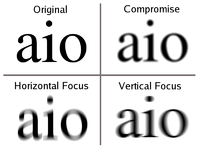
Photo from wikipedia
There are patients who do not obtain satisfactory relief for their headache after consulting a specialist. So they take charge of their own treatment and eventually become serious analgesic abusers.… Click to show full abstract
There are patients who do not obtain satisfactory relief for their headache after consulting a specialist. So they take charge of their own treatment and eventually become serious analgesic abusers. Other patients are less demanding, requiring only a clear diagnosis to allay fears that may have been harboured for years: in such cases, simply giving the pain a name can improve quality of life and encourage compliance with a prescribed therapy that will satisfactorily control the headache condition. These polarized outcomes, distilled from my own experience as a headache neurologist, are familiar, I am sure, to all headache clinicians. Before addressing them, I would like to re-emphasize something that never fails to strike me: the fundamental subjectivity of the situation—the head pain can be described by the patient but never verified by the neurologist. In my career I have witnessed the evolution of scientific thought on the pathophysiology of headache that has changed from a peripheral vascular hypothesis to the hypothesis of an involvement of the central nervous system. However, because of this essential characteristic of subjectivity, it has still not been possible to pin down causes for primary headaches: we have not found the hope for primum movens and it is increasingly clear that a headache condition may have several contributing causes. Nevertheless, functional imaging studies are providing insights into the pathophysiology of primary headaches, particularly those investigating interactions between pain, emotion, and headache, in the genesis of behaviour: they are suggesting a dysfunctional interaction between nervous system areas concerned with emotion and pain pathways. [1, 2] This dysfunction would be one of homeostasis as Bud Craig and Antonio Damasio have argued [3–5], such that altered biobehavioural responses to head pain give rise to many of the clinical phenomena manifesting in chronic headache. In this view, pain is part of the patient’s behavioural response to his/her headache condition, with the corollary that personality traits influence whether treatment will be successful. Thus, for many patients, simply treating the pain only often leads to treatment failure. In recent years, there has been a tendency to downplay ‘subjective’ history taking, and physicians have become overly concerned with simply finding ‘the right medication’. It is my firm opinion that the pharmaceutical treatment of head pain needs to be integrated with a bio-psychological (or cognitive-behavioural) approach predicated on the physician paying careful attention to the patient’s subjective descriptions, in order to identify personality traits and develop personalized approaches that employ both pharmacological and nonpharmacological treatments. This approach will maximize the probability of clinical success and reduce the risk of chronic headache characterized by analgesic abuse. All this implies the necessity of building a rapport of empathy with the patient. This will facilitate a collaborative approach to the problem but above all will make it easier for the physician to listen to and interpret the language of symptoms, enabling him/her to become aware of those ‘mysterious functional disharmonies’ that may have a major influence on treatment success, but which cannot be revealed by any ‘objective’ clinical examination.
Journal Title: Neurological Sciences
Year Published: 2017
Link to full text (if available)
Share on Social Media: Sign Up to like & get
recommendations!